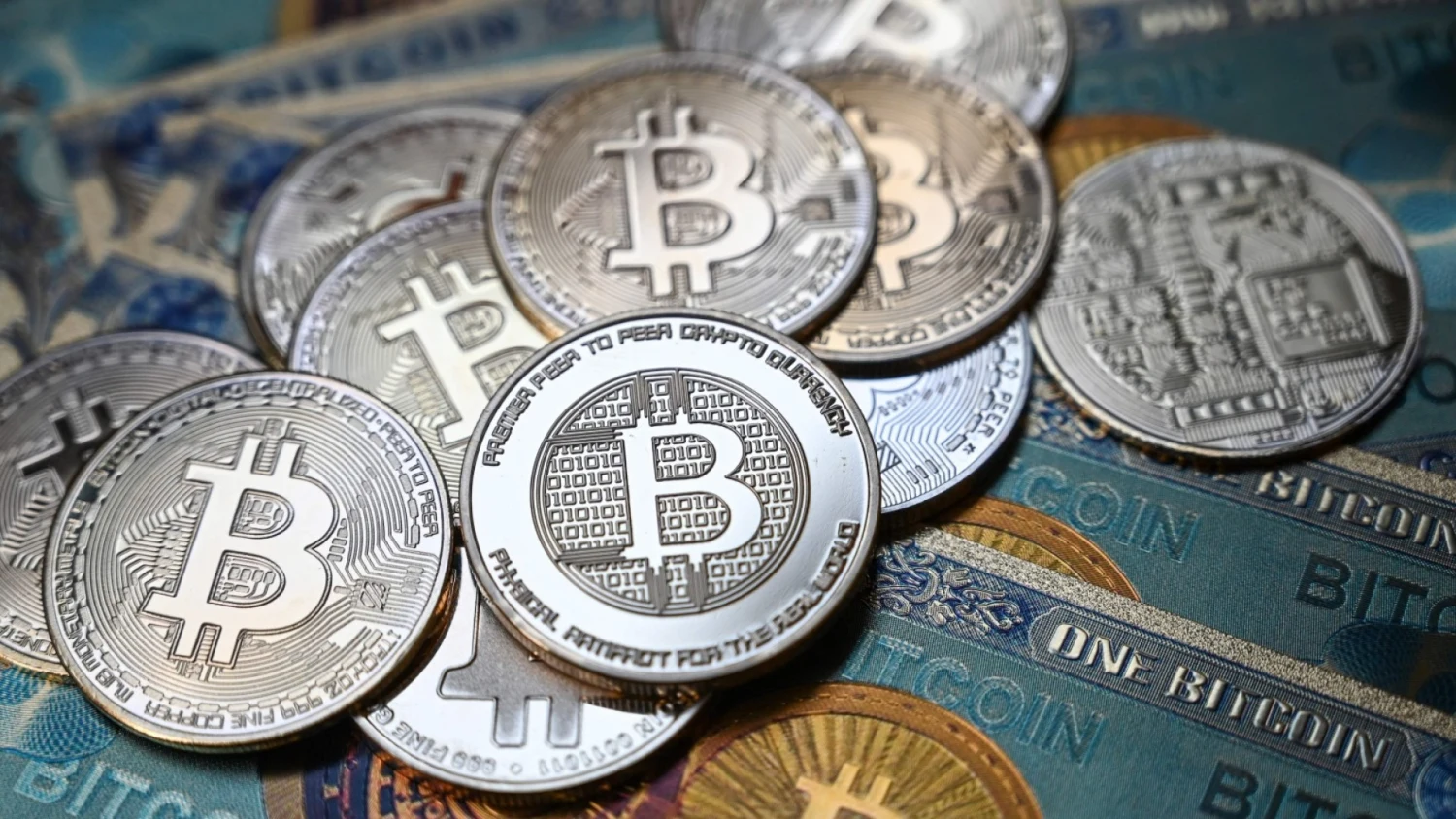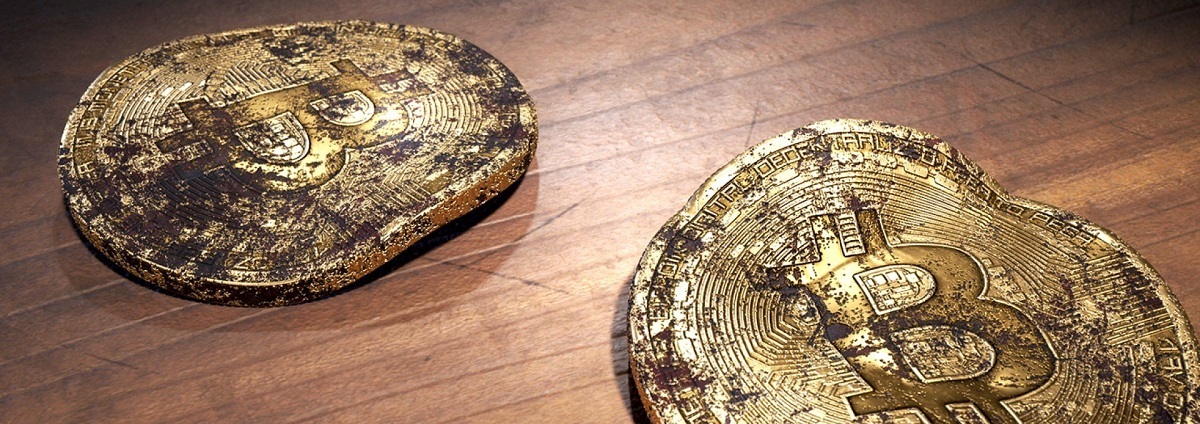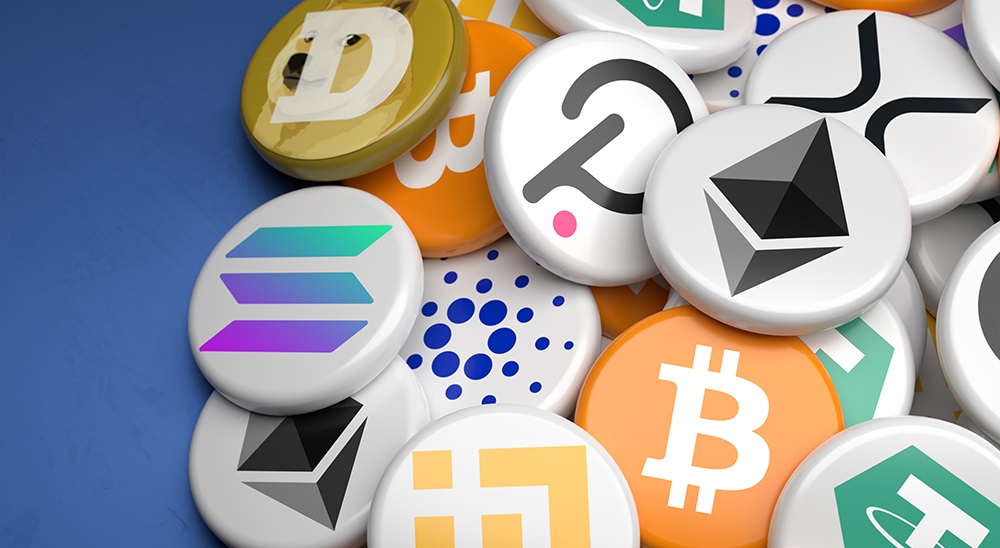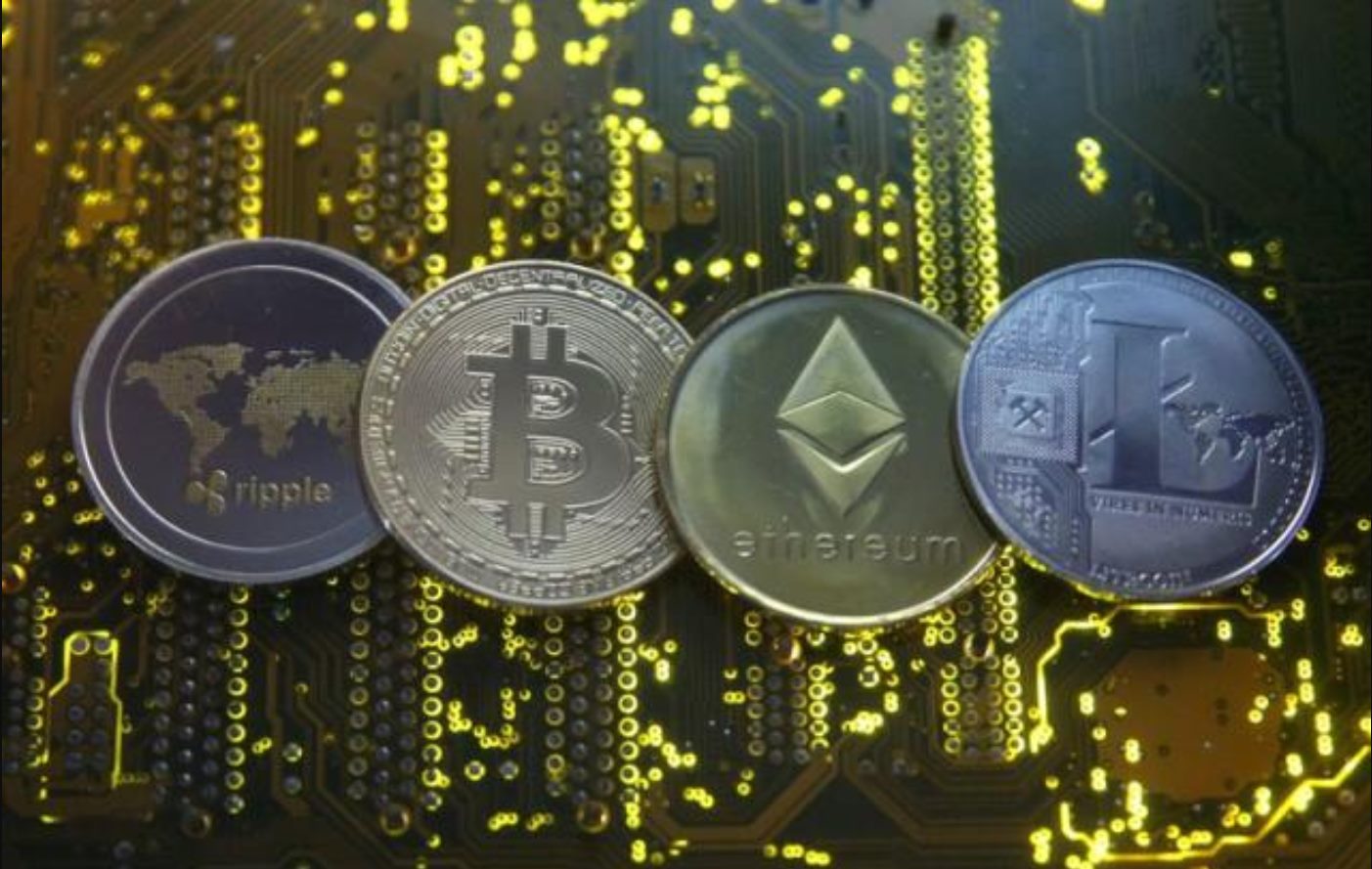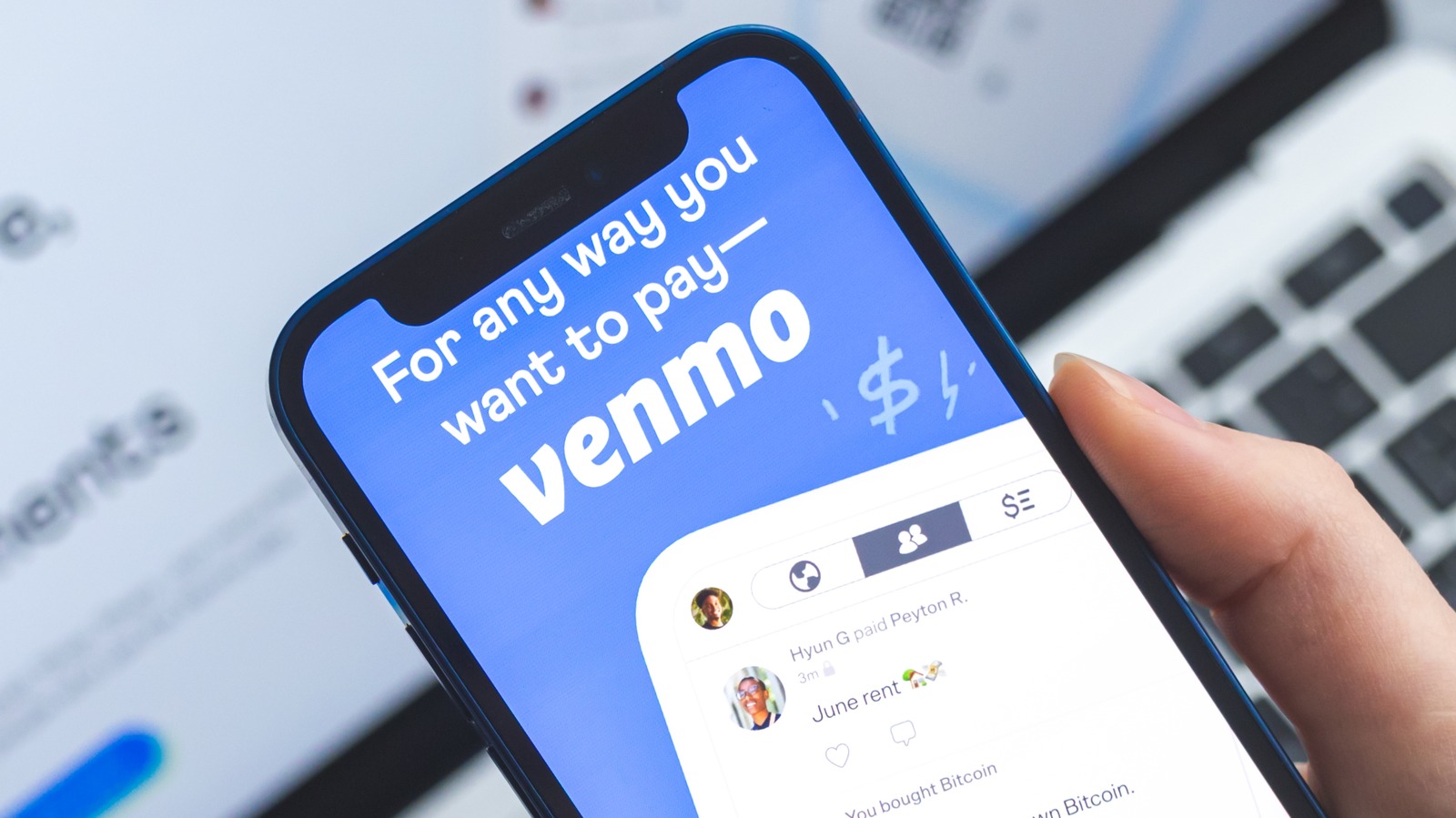Introduction
Welcome to the digital age, where advancements in technology have revolutionized the way we live, work, and transact. One of the significant changes ushered in by this technological wave is the rise of digital currency. Gone are the days when physical cash was the predominant means of exchange. With digital currency, transactions can now be conducted online, securely and efficiently.
Digital currency, also known as cryptocurrency, is a form of virtual or digital money that utilizes encryption techniques to regulate the creation of new units and secure financial transactions. Unlike traditional fiat currency, digital currency operates independently of central banks and is decentralized, relying on blockchain technology to record and verify transactions.
There are various types of digital currencies available in the market today, such as Bitcoin, Ethereum, Ripple, and many others. Each type of digital currency operates on its own set of rules and has its own unique features and benefits.
Switching to digital currency can offer a wide array of advantages. It provides increased security, as transactions are encrypted and protected against fraud and identity theft. Digital currency also offers faster and more convenient transactions, eliminating the need for physical exchanges and reducing the reliance on intermediaries such as banks. Additionally, digital currency can be used for international transactions, simplifying the process and lowering costs associated with currency exchange.
However, before making the switch to digital currency, there are several factors to consider. It’s crucial to understand the risks involved, such as volatility and regulatory challenges. Additionally, selecting the right digital wallet, choosing a reputable digital currency exchange, and practicing proper security measures are essential for a smooth transition.
In this guide, we will explore the world of digital currency and provide you with a step-by-step approach to switch from traditional currency to digital currency. We will discuss setting up a digital wallet, choosing the right exchange, buying and selling digital currency, and managing and storing it securely.
So, if you’re ready to embrace the future of finance and join the digital currency revolution, let’s dive in and explore the exciting world of digital currency!
Why Switch to Digital Currency?
The shift towards digital currency has gained significant momentum in recent years, attracting the attention of individuals, businesses, and governments worldwide. So, what are the reasons behind this growing interest and why should you consider switching to digital currency? Let’s explore some compelling reasons:
1. Security: Digital currencies offer enhanced security features compared to traditional forms of payment. Transactions conducted using digital currency are encrypted and decentralized, making it extremely difficult for hackers to compromise the integrity of the transaction or steal sensitive information. Additionally, digital currency eliminates the risk associated with physical cash, such as loss, theft, or counterfeit bills.
2. Speed and Efficiency: Digital currency transactions can be executed instantly, eliminating the need for intermediaries, such as banks, to process and verify transactions. This translates into faster and more efficient transactions, particularly for cross-border payments, which often involve long processing times and high fees with traditional banking systems.
3. Accessibility: Digital currency provides financial inclusion to unbanked individuals who may not have access to traditional banking services. With a smartphone and internet connection, anyone can participate in the digital currency ecosystem, opening up opportunities for economic empowerment and financial independence.
4. Cost Savings: Digital currency transactions typically come with lower fees compared to traditional payment methods. International remittances, for example, can be costly due to high exchange rates and intermediaries. Digital currency eliminates the need for multiple currency conversions and reduces associated fees.
5. Global Reach: Digital currency transactions are not bound by geographic borders, making them ideal for cross-border payments and international trade. Businesses can expand their reach to a global customer base without the limitations and costs associated with traditional banking systems.
6. Innovation and Potential Upside: Digital currency technology, often driven by blockchain, continues to evolve and present new opportunities for innovation. This has the potential to disrupt and revolutionize various industries, including finance, supply chain, healthcare, and more. By embracing digital currency, individuals and businesses can stay at the forefront of technological advancements and capitalize on potential future upside.
These are just a few of the reasons driving the increasing adoption of digital currency. As with any financial decision, it’s essential to conduct thorough research and understand the risks involved. However, for those seeking enhanced security, speed, accessibility, cost savings, and global reach, switching to digital currency can offer a new world of financial possibilities.
Understanding Different Types of Digital Currency
Digital currency encompasses a wide range of cryptocurrencies, each with its own unique features, functionalities, and underlying technology. Understanding the different types of digital currency is crucial before deciding which one aligns with your financial goals and preferences. Let’s explore some of the main digital currencies:
1. Bitcoin (BTC): Bitcoin is the most well-known and widely used digital currency. It was the first cryptocurrency to be created and operates on a decentralized network called the blockchain. Bitcoin transactions are stored and verified by a network of computers known as miners, who are rewarded with Bitcoin for their computational efforts.
2. Ethereum (ETH): Ethereum is more than just a digital currency; it is a decentralized computing platform that enables the creation of smart contracts and decentralized applications (DApps). Ethereum’s currency, Ether, is used to power these contracts and execute transactions within the Ethereum network.
3. Ripple (XRP): Ripple is both a digital currency and a payment protocol designed to facilitate fast, low-cost international money transfers. Ripple’s native currency, XRP, acts as a bridge currency facilitating the transfer of value between different fiat currencies.
4. Litecoin (LTC): Created as a “lite” version of Bitcoin, Litecoin offers faster transaction confirmation times and a different hashing algorithm. It was designed to be more efficient for everyday transactions and has gained popularity as a digital currency for small payments and microtransactions.
5. Bitcoin Cash (BCH): Bitcoin Cash is a result of a hard fork from Bitcoin. It shares many similarities with Bitcoin but aims to offer faster transaction speeds and lower fees. Bitcoin Cash was created to address scalability issues associated with Bitcoin and provide a more efficient payment system.
6. Cardano (ADA): Cardano is a blockchain platform that aims to provide a more secure and sustainable infrastructure for the development of decentralized applications. Its native currency, ADA, is used for transactions and staking on the Cardano network.
These are just a few examples of the numerous digital currencies available in the market today. When choosing a digital currency, it’s essential to consider factors such as its underlying technology, transaction fees, scalability, security, and community adoption.
Remember, digital currencies can be highly volatile, and their value can fluctuate significantly. It’s crucial to conduct thorough research, seek advice from reputable sources, and understand the risks involved before investing or using any particular digital currency.
Now that we have explored the different types of digital currencies let’s move on to the next section, where we will discuss the factors to consider before switching to digital currency.
Factors to Consider Before Switching to Digital Currency
Switching to digital currency can be an exciting endeavor, but it’s important to consider several factors before taking the leap. Understanding these factors will help you make an informed decision and ensure a smooth transition to the world of digital currency. Here are some key factors to consider:
1. Education and Awareness: Before switching to digital currency, it’s crucial to educate yourself about how it works, the underlying technology, and the risks involved. Take the time to research and understand the basics of blockchain technology, encryption, and decentralized networks. Stay updated with the latest news and developments in the digital currency space to make informed decisions.
2. Volatility and Risk: Digital currencies are known for their volatility, with prices that can fluctuate significantly in short periods. It’s essential to be prepared for potential price swings and understand the risks associated with investing or using digital currency. Consider your risk tolerance and financial goals before committing to the digital currency market.
3. Regulatory Environment: The regulatory landscape surrounding digital currency varies from country to country. Some countries have embraced digital currencies and established regulations to govern their use, while others have imposed restrictions or bans. Research the legal and regulatory frameworks in your jurisdiction to ensure compliance and avoid any legal complications.
4. Security and Privacy: Digital currency transactions rely on secure encryption techniques, but it’s crucial to take additional measures to protect your digital assets. Familiarize yourself with best practices for securing digital wallets, such as using strong passwords, enabling two-factor authentication, and storing backups securely. Consider the reputation and security features of digital currency exchanges and wallets when choosing service providers.
5. User-Friendliness: Assess the user-friendliness and ease of use of digital currency platforms, wallets, and exchanges. Consider factors such as user interfaces, customer support, and available features. Opt for platforms that are intuitive and provide a seamless experience to make your transition to digital currency smoother.
6. Adoption and Liquidity: Consider the level of adoption and liquidity of the digital currency you’re interested in. Higher adoption can lead to wider acceptance and availability of goods and services that can be purchased with digital currency. Additionally, higher liquidity ensures that you can easily buy or sell your digital assets without significant price volatility.
7. Transaction Speed and Fees: Evaluate the transaction speed and fees associated with the digital currency you’re considering. Some digital currencies offer faster transaction confirmation times and lower fees compared to others. These factors are particularly crucial if you intend to use digital currencies for everyday transactions or cross-border payments.
By carefully considering these factors, you can assess whether switching to digital currency aligns with your financial objectives, risk tolerance, and lifestyle. Remember to stay informed, seek advice from reputable sources, and continue learning as the digital currency landscape continues to evolve.
Next, we will guide you through a step-by-step process to help you successfully switch to digital currency.
Step-by-Step Guide: Switching to Digital Currency
Switching to digital currency may seem overwhelming, especially if you’re new to the world of cryptocurrencies. However, with the right guidance and a step-by-step approach, the process can be simplified. Here is a guide to help you successfully switch to digital currency:
Step 1: Educate Yourself: Before diving into the world of digital currency, take the time to educate yourself about blockchain technology, different types of digital currencies, and their underlying principles. Familiarize yourself with terms like private keys, wallets, and blockchain transactions.
Step 2: Determine Your Goal: Clarify your purpose for switching to digital currency. Are you looking to invest, use digital currency for online purchases, or explore blockchain technology for business purposes? Defining your goal will help you make informed decisions throughout the process.
Step 3: Choose a Digital Wallet: A digital wallet is essential for storing and managing your digital currency. Research and choose a reputable wallet provider that offers user-friendly interfaces, robust security features, and compatibility with the digital currency you intend to use.
Step 4: Select a Digital Currency Exchange: A digital currency exchange allows you to buy, sell, and trade digital currencies. Look for an exchange that is trustworthy, has a good reputation, offers a wide selection of digital currencies, and ensures secure transactions. Verify the process for depositing funds and withdrawing your digital assets.
Step 5: Complete the Verification Process: Most reputable digital currency exchanges require users to undergo a verification process to comply with Know Your Customer (KYC) regulations. Be prepared to provide identification documents and personal information to complete the verification.
Step 6: Fund Your Account: Once your exchange account is set up and verified, you’ll need to deposit funds into your account. This can be done through various payment methods, such as bank transfers or using other cryptocurrency assets if supported by the exchange.
Step 7: Buy and Sell Digital Currency: With funds in your exchange account, you can start buying and selling digital currency. Determine the amount you want to invest or the specific digital currency you wish to purchase. Specify the amount and complete the transaction following the instructions provided by the exchange.
Step 8: Store Digital Currency Securely: After purchasing digital currency, it’s crucial to store it securely in your digital wallet. Follow best practices for wallet security, such as keeping your private keys offline, enabling two-factor authentication, and regularly backing up your wallet.
Step 9: Stay Informed and Updated: The world of digital currency is dynamic and constantly evolving. Stay updated with the latest news, market trends, and security practices. Join online communities, attend webinars, and follow reputable sources to stay informed and make informed decisions.
Step 10: Explore and Utilize Digital Currency: Once you have successfully switched to digital currency, explore the possibilities it offers. Use your digital currency for online purchases, explore blockchain-based applications, or consider investing in other digital assets within the market, if aligned with your financial goals.
By following this step-by-step guide, you can navigate your way through the process of switching to digital currency with confidence. Remember to start with proper education and caution, and gradually explore and utilize digital currency according to your goals and comfort level.
Setting Up a Digital Wallet
A digital wallet is an essential tool for managing and storing your digital currency securely. It serves as a digital equivalent of a physical wallet, allowing you to send, receive, and store your digital assets. Here is a step-by-step guide to help you set up a digital wallet:
Step 1: Determine the Type of Wallet: There are different types of digital wallets available, including software wallets, hardware wallets, and online wallets. Consider your security preferences and convenience when choosing the type of wallet that suits your needs.
Step 2: Research and Choose a Wallet Provider: Look for reputable wallet providers that offer a user-friendly interface, strong security features, and support for the digital currency you intend to use. Read reviews, check their reputation, and ensure they have a track record of protecting user assets.
Step 3: Download or Install the Wallet: If you choose a software wallet, visit the official website of the wallet provider and download their wallet application. Ensure that you are downloading from a trusted source to avoid malware or phishing attempts. If you opt for a hardware wallet, follow the manufacturer’s instructions to set it up and connect it to your computer or mobile device.
Step 4: Create a New Wallet: Open the wallet application and follow the on-screen instructions to create a new wallet. Typically, you will be prompted to generate a strong password and possibly a recovery seed phrase. Make sure to write down the seed phrase and store it in a safe place, preferably offline. Remember, the security of your wallet relies on the strength of your password and the protection of your recovery seed.
Step 5: Backup Your Wallet: Most wallet applications provide an option to backup your wallet. Enable this feature and follow the steps to create a backup of your wallet. This backup will be crucial in case of device failure, loss, or theft.
Step 6: Secure Your Wallet: Take additional security measures to protect your wallet and digital assets. Enable two-factor authentication if the wallet supports it, and consider using a dedicated device or separate computer for wallet operations. Regularly update your wallet software to benefit from the latest security patches.
Step 7: Receive and Send Transactions: Your wallet will provide you with a unique address, similar to a bank account number, to receive digital currency. Share this address with others to receive funds. To send transactions, input the recipient’s wallet address and specify the amount you want to send. Before finalizing the transaction, double-check the recipient’s address to avoid sending funds to the wrong destination.
Step 8: Stay Informed: Stay updated with the latest security practices and advancements in wallet technology. Follow the wallet provider’s announcements, read blogs or forums related to digital currency, and stay vigilant against potential phishing attempts or scams.
Remember that the security of your digital wallet is paramount. Treat your wallet as you would treat a physical wallet, safeguarding it from unauthorized access and taking regular backups to ensure the safety of your digital assets. With a well-secured digital wallet, you can confidently manage and store your digital currency.
Choosing the Right Digital Currency Exchange
A digital currency exchange is a platform that allows you to buy, sell, and trade digital currencies. Choosing the right exchange is crucial to ensure a secure and reliable experience. Here are some factors to consider when selecting a digital currency exchange:
1. Security: Security should be your top priority when choosing an exchange. Look for exchanges that implement robust security measures such as two-factor authentication, encrypted data transmission, and offline cold storage for digital assets. Research the exchange’s track record and reputation for safeguarding customer funds.
2. Reputation and History: Consider the reputation and history of the exchange. Look for well-established exchanges that have been in operation for a significant period. Read reviews, check industry forums, and consider the experiences of other users to gauge the exchange’s reliability and trustworthiness.
3. Supported Digital Currencies: Make sure the exchange supports the digital currencies you intend to buy or trade. Not all exchanges offer the same range of currencies, so ensure that the exchange you choose provides the specific digital currencies you’re interested in.
4. Trading Fees: Examine the fee structure of the exchange. Different exchanges have varying fee models, including transaction fees, deposit fees, and withdrawal fees. Compare the fees charged by different exchanges and consider whether the services and features offered justify the cost.
5. Liquidity: Liquidity refers to the ease at which assets can be bought or sold on an exchange. Higher liquidity ensures that you can execute transactions quickly and at fair market prices. Exchanges with higher trading volumes generally offer better liquidity.
6. User Experience: Consider the user interface and overall user experience offered by the exchange. Look for an intuitive platform that is easy to navigate and understand. A user-friendly exchange can simplify the trading process and make it more enjoyable.
7. Customer Support: Evaluate the level of customer support provided by the exchange. Reliable customer support can be vital in resolving any issues or concerns that may arise during the trading process. Look for exchanges that offer responsive support through multiple channels such as live chat, email, or phone.
8. Regulatory Compliance: Ensure that the exchange complies with relevant regulatory requirements in your jurisdiction. Check if the exchange is registered with applicable regulatory bodies and follows strict Know Your Customer (KYC) and Anti-Money Laundering (AML) procedures.
9. User Reviews and Feedback: Read user reviews and feedback about the exchange to gather insights into other traders’ experiences. Look for common positive or negative themes to help you make an informed decision.
10. Ease of Deposit and Withdrawal: Consider the deposit and withdrawal options provided by the exchange. Look for exchanges that support convenient and secure methods for funding your account and withdrawing your funds.
By carefully assessing these factors, you can select the right digital currency exchange that meets your specific needs and aligns with your trading goals. Remember to conduct thorough research, consider the security and reputation of the exchange, and prioritize a user-friendly experience to ensure a smooth trading journey.
How to Buy and Sell Digital Currency
Buying and selling digital currency is a straightforward process, especially with the availability of digital currency exchanges. Here are the general steps to follow when buying and selling digital currency:
Step 1: Choose a Digital Currency Exchange: Select a reputable digital currency exchange that supports the digital currency you want to buy or sell. Ensure that the exchange provides a user-friendly interface, robust security measures, and a good reputation.
Step 2: Create an Account: Sign up for an account on the chosen exchange by providing the required information and completing the necessary verification process. This typically involves providing identification documents to comply with Know Your Customer (KYC) regulations.
Step 3: Deposit Funds: Deposit funds into your exchange account. Most exchanges offer various options such as bank transfers, credit/debit card payments, or even other digital currencies for funding your account. Follow the provided instructions to complete the deposit.
Step 4: Choose the Digital Currency and Amount: Select the digital currency you want to buy or sell from the available options on the exchange. Specify the amount you wish to purchase or sell, taking into consideration any minimum or maximum limits imposed by the exchange.
Step 5: Place an Order: Depending on the exchange, you can either place a market order or limit order. A market order is executed immediately at the current market price, while a limit order allows you to set a specific price at which you want to buy or sell.
Step 6: Confirm the Transaction: Review the details of your order before confirming the transaction. Ensure that you have selected the correct digital currency, entered the desired amount, and verified the transaction fees associated with your order.
Step 7: Set up a Digital Wallet: If you don’t already have a digital wallet, set one up to securely store your digital currency. Follow the instructions provided by the wallet provider to create a new wallet and ensure you keep your wallet’s public address handy.
Step 8: Transfer the Digital Currency: After the purchase is complete, transfer the purchased digital currency to your digital wallet. Provide your wallet’s public address during the withdrawal process on the exchange. Double-check the address to avoid any mistakes or errors.
Step 9: Monitor and Manage: Keep an eye on the market price and monitor your digital currency holdings. You can utilize the exchange’s trading tools and features to set price alerts, stop-loss orders, or even initiate further trades as desired.
Step 10: Selling Your Digital Currency: To sell your digital currency, follow a similar process on the exchange as you did for buying. Select the digital currency you want to sell, specify the amount, and place a sell order at the desired price. Once the transaction is completed, you can withdraw the converted funds from the exchange.
It’s crucial to note that the process may vary slightly depending on the exchange and the digital currency you are buying or selling. Be sure to familiarize yourself with the specific procedures and guidelines provided by the exchange you choose.
By following these steps and conducting thorough research, you can confidently buy and sell digital currency. Remember to keep security measures in mind, such as using reputable exchanges, enabling two-factor authentication, and storing your digital currency in secure wallets.
Managing and Storing Digital Currency Safely
Ensuring the safe management and storage of your digital currency is paramount to protect your valuable assets. Here are some important guidelines to help you securely manage and store your digital currency:
1. Use Secure Digital Wallets: Choose a reputable and secure digital wallet to store your digital currency. Look for wallets that employ strong security measures, such as encryption, two-factor authentication (2FA), and cold storage options. Research and select wallets that have a solid track record of protecting user funds.
2. Enable Two-Factor Authentication (2FA): Enable 2FA whenever it is available for your digital wallet and any associated online accounts. Two-factor authentication adds an extra layer of security by requiring a second verification step, usually through your smartphone or a separate device, to access your accounts.
3. Regularly Update Software and Firmware: Keep your digital wallet software and firmware up to date. Developers frequently release security patches and updates to address vulnerabilities. Staying updated ensures that you have the latest security enhancements and protections.
4. Keep Your Private Keys Offline: Private keys are vital for accessing and managing your digital currency. Store your private keys offline, ideally on a dedicated hardware wallet or a secure offline backup. Keeping your private keys offline minimizes the risk of them being stolen or compromised.
5. Backup Your Wallet: Regularly backup your digital wallet to avoid losing access to your funds in case of device failure, loss, or theft. Follow the backup instructions provided by your wallet provider and store backups in secure and separate locations, such as encrypted cloud storage or physical offline backups.
6. Be Cautious with Public Wi-Fi: Avoid accessing your digital wallet or making transactions while connected to unsecured public Wi-Fi networks. Public Wi-Fi networks can be prone to hacking, and your data, including wallet information, may be at risk. Use a secure and private network or a virtual private network (VPN) for added protection.
7. Be Wary of Phishing Attempts: Be vigilant against phishing attempts, where malicious actors try to trick you into revealing your wallet login credentials or private keys. Never click on suspicious links, download files from unknown sources, or share sensitive information with untrusted sources. Always verify the legitimacy of any communication or request related to your digital wallet.
8. Diversify Storage Methods: Consider diversifying your storage methods for added security. Allocate different wallets or storage devices for different amounts of digital currency. This approach minimizes the risk of losing all your digital assets if one wallet or storage device is compromised.
9. Keep Track of Transaction History: Maintain a record of your digital currency transactions, including date, time, amount, and recipient addresses. Regularly review your transaction history to detect any unauthorized activity. This record will also be useful for tax purposes or in case of any dispute with exchanges or wallet providers.
10. Stay Informed and Educated: Stay updated with the latest security practices and best practices in managing and storing digital currency. Keep an eye on the latest news and developments in the digital currency space to stay aware of potential security risks and new security features.
By following these guidelines, you can significantly enhance the security and safety of your digital currency holdings. Remember, maintaining strong security practices is essential in safeguarding your digital assets from potential threats and ensuring peace of mind in your digital currency management.
Tips for Security and Protecting Against Fraud
When dealing with digital currency, it’s crucial to prioritize security measures to protect your funds from potential threats and fraud. Here are some essential tips to enhance your security and protect against fraud:
1. Stay Updated on Security Best Practices: Regularly educate yourself about the latest security practices in the digital currency industry. Stay informed about new threats, vulnerabilities, and security enhancements by following reputable sources, forums, and specific digital currency communities.
2. Use Strong and Unique Passwords: Create strong, unique passwords for your digital currency accounts and wallets. Avoid using common or easily guessable passwords. Consider using a password manager to securely generate and store your passwords.
3. Enable Two-Factor Authentication (2FA): Enable 2FA whenever possible to add an extra layer of security to your accounts. 2FA requires an additional verification step, such as a unique code sent to your mobile device, in addition to your password to gain access to your accounts.
4. Be Wary of Phishing Attempts: Be cautious of phishing attempts where fraudsters try to trick you into revealing your login credentials or personal information. Avoid clicking on suspicious links, downloading files from unknown sources, and responding to unsolicited requests for sensitive information.
5. Secure Your Devices: Keep your devices secure by using strong passwords or biometric authentication. Regularly update your operating system, antivirus software, and other security applications to protect against known vulnerabilities.
6. Verify Website URLs: Always double-check the authenticity of websites before entering your sensitive information. Check for HTTPS encryption and ensure the website URL is correct to avoid falling victim to phishing websites designed to steal your login credentials.
7. Protect Your Private Keys: Safely store your private keys offline in a secure location, preferably on a hardware wallet or an encrypted USB drive. Avoid sharing or exposing your private keys, as they grant access to your digital currency funds.
8. Be Cautious with Public Wi-Fi: Avoid accessing your digital currency accounts or making transactions while connected to public Wi-Fi networks. Public networks may not be secure, and your data may be at risk of interception by malicious actors.
9. Regularly Backup Your Wallet: Make regular backups of your digital wallet and store them securely. This ensures that you have a copy of your wallet’s important information in case of device failure, loss, or theft.
10. Be Skeptical of Investment Opportunities: Beware of investment schemes and promises of guaranteed returns related to digital currency. Exercise caution and conduct thorough research before investing your funds in any digital currency-related projects or opportunities.
11. Regularly Monitor Your Accounts: Keep a close eye on your digital currency accounts and transaction history. Promptly report any suspicious activity to the appropriate authorities or the customer support of your exchange or wallet provider.
12. Trust Reputable Exchanges and Wallet Providers: Only use well-established, reputable exchanges and wallet providers. Conduct comprehensive research, read reviews, and check for proper regulatory compliance to ensure the safety of your funds.
By following these essential security tips, you can significantly reduce the risk of fraud and better protect your digital currency holdings. Stay vigilant, exercise caution, and prioritize security measures to safeguard your funds and maintain a secure digital currency experience.
Recognizing the Advantages and Challenges of Digital Currency
Digital currency, also known as cryptocurrency, has gained significant attention and sparked ongoing discussions among individuals, businesses, and governments. It’s important to recognize both the advantages and challenges associated with digital currency to fully understand its potential impact. Let’s explore these aspects:
Advantages of Digital Currency:
1. Security and Privacy: Digital currency transactions are secured using cryptographic technology, making them highly secure and less susceptible to fraud or identity theft. Users can maintain their privacy while still conducting transparent transactions on the blockchain, ensuring data protection and identity anonymity.
2. Efficiency and Accessibility: Digital currency enables fast and efficient peer-to-peer transactions, eliminating the need for intermediaries such as banks. It enhances financial inclusion by providing access to financial services for the unbanked population who lack access to traditional banking facilities.
3. Reduced Transaction Costs: Digital currency transactions often have lower fees compared to traditional financial systems. Cross-border transactions can be conducted at a fraction of the cost as digital currency operates on a global scale, eliminating the need for currency conversions and intermediaries.
4. Global Reach and Inclusivity: Digital currency transcends geographical boundaries, allowing for seamless cross-border transactions and opening up opportunities for international trade and commerce. It promotes financial inclusion by enabling individuals in underserved regions to participate in the global economy.
5. Decentralization and Disintermediation: Digital currency operates on decentralized networks, often powered by blockchain technology. This decentralization eliminates the need for centralized intermediaries, reducing fees, increasing transparency, and enhancing trust in the financial system.
Challenges of Digital Currency:
1. Volatility: Digital currency markets are highly volatile, subject to abrupt price fluctuations that can impact investors and users. This volatility presents both risks and opportunities, requiring caution and risk management strategies for all participants.
2. Regulatory Uncertainty: While digital currency continues to gain recognition, regulatory frameworks differ across jurisdictions, leading to patchy and uncertain regulation. This lack of consistent regulation may hinder adoption, create compliance challenges, and subject users to potential legal and tax complexities.
3. Security Risks: While digital currency transactions are considered secure, there are inherent security risks associated with storing and managing digital assets. The risk of hacking, phishing, or losing access to wallets, private keys, or backups can result in permanent loss of funds if adequate security measures are not implemented.
4. Scalability and Adoption: As digital currencies gain popularity, scaling solutions become critical to accommodate a growing number of users and transactions. Ensuring scalability without compromising decentralization remains a challenge, along with achieving widespread adoption beyond early adopters and tech-savvy individuals.
5. Energy Consumption: Some digital currencies, such as Bitcoin, require significant computational power and energy consumption for mining and maintaining the blockchain. This environmental impact has raised concerns about sustainability and energy efficiency in the long term.
By recognizing both the advantages and challenges of digital currency, individuals, businesses, and governments can make informed decisions, develop appropriate regulations, and leverage the potential of digital currency while addressing its associated complexities.
How Digital Currency Can Revolutionize Various Industries
Digital currency, with its underlying blockchain technology, has the potential to revolutionize numerous industries by introducing new models of trust, efficiency, and transparency. Here’s a look at how digital currency can drive innovation and reshape various sectors:
1. Finance and Banking: Digital currency enables faster, more efficient cross-border payments, reducing the reliance on traditional banking systems. It provides increased financial inclusion by offering banking services to the unbanked population. Blockchain-based smart contracts can streamline complex financial transactions, including loans, insurance, and asset management, by automating processes and eliminating intermediaries.
2. Supply Chain and Logistics: Implementing digital currency and blockchain technology in supply chain management enhances traceability, transparency, and security. It enables real-time tracking of goods, ensuring authenticity and reducing fraud, counterfeiting, and theft. Smart contracts can automate supply chain processes, including inventory management, provenance verification, and payment settlements.
3. Healthcare: Digital currency fosters secure and efficient management of healthcare records and sharing of medical data across institutions. Blockchain technology facilitates interoperability, data privacy, and patient consent management. Micropayments using digital currency can incentivize data sharing, promote medical research, and improve patient outcomes.
4. Real Estate: Digital currency and blockchain technology can simplify property transactions by streamlining title transfers, reducing paperwork, and increasing transparency. Smart contracts can automate escrow and contract execution, allowing for secure and efficient real estate transactions. Fractional ownership and tokenization of properties provide new investment opportunities and liquidity.
5. Retail and E-commerce: Digital currency enables frictionless cross-border transactions and reduces transaction fees, making it ideal for global e-commerce. It enhances security and helps protect consumer data from breaches. Loyalty programs can be tokenized, offering seamless rewards and incentivizing customer engagement, leading to improved customer loyalty and retention.
6. Intellectual Property: Digital currency and blockchain technology can revolutionize intellectual property management by creating a decentralized and transparent platform for artists, musicians, and content creators. Digital rights management, copyright protection, and fair compensation can be seamlessly enforced through smart contracts and tokenized assets.
7. Energy and Utilities: Digital currency and blockchain-based energy platforms enable peer-to-peer energy trading, eliminating the need for energy retailers and ensuring transparent tracking of renewable energy generation. Tokenized systems incentivize sustainable energy production and consumption while reducing costs and carbon emissions.
8. Gaming and Entertainment: Digital currency enables in-game economies, digital asset ownership, and secure peer-to-peer transactions within gaming ecosystems. Non-fungible tokens (NFTs) can represent unique digital assets, such as virtual real estate and digital collectibles, enabling new revenue streams and fostering creativity and innovation in the gaming industry.
9. Government Services: Digital currency can enhance government services by facilitating secure and transparent voting systems, public fund management, and efficient delivery of social benefits. Blockchain-based identity systems can protect citizen data and enable seamless, cross-platform access to government services.
10. Philanthropy and Social Impact: Digital currency enables transparent tracking of charitable donations and ensures that funds reach their intended recipients. Blockchain-based smart contracts can automate and verify the delivery of aid and donations, ensuring accountability and reducing overhead costs.
These are just a few examples of how digital currency and blockchain technology can transform industries. By embracing the potential of digital currency, businesses and individuals can drive innovation, increase efficiency, and unlock new economic opportunities across various sectors.
Conclusion
As we conclude this exploration of digital currency, it’s clear that this innovative form of money has the potential to disrupt traditional financial systems and revolutionize various industries. From finance and banking to supply chain management, healthcare, real estate, and more, digital currency and its underlying blockchain technology offer numerous advantages, including enhanced security, efficiency, and transparency.
By switching to digital currency, individuals can experience increased financial inclusion, faster cross-border transactions, and reduced transaction costs. Businesses can benefit from streamlined processes, secure supply chain management, and new avenues for investment and revenue generation. Governments can leverage digital currency for efficient public fund management and transparent governance.
However, it’s important to recognize the challenges associated with digital currency, such as price volatility, regulatory uncertainties, security risks, and scalability concerns. Individuals and businesses must stay informed, prioritize security measures, and navigate the evolving digital currency landscape with caution and proper risk management strategies.
As digital currency continues to gain momentum and adoption, it is imperative that individuals and organizations proactively adapt to this new paradigm. This includes understanding the intricacies of digital wallets, choosing reputable digital currency exchanges, embracing security best practices, and adapting to evolving regulatory landscapes.
By recognizing the advantages and potential of digital currency, individuals and businesses can harness its transformative power to drive innovation, improve financial inclusion, enhance transparency, and unlock new economic opportunities. With diligent research, education, and the application of best practices, digital currency can empower individuals, streamline processes, and foster economic growth in the digital age.







